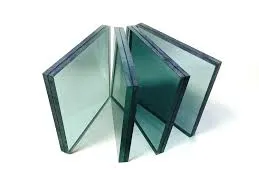Architectural Textured Glass A Fusion of Function and Aesthetics
In the ever-evolving realm of architecture, innovative materials continually reshape the landscapes of our built environments. Among these materials, architectural textured glass is gaining prominence for its unique ability to blend function with aesthetic appeal. As architects and designers seek to create spaces that are both visually striking and environmentally responsive, textured glass stands out as an ideal solution.
Understanding Textured Glass
Textured glass is a form of glass that features patterns or designs on its surface, achieved through various processes such as casting, etching, or pressing. These surfaces not only serve a decorative purpose but also provide practical benefits. Textured glass can diffuse light, providing a softer and more evenly distributed illumination within a space. This quality is particularly valuable in settings such as offices, where glare reduction is essential for comfort and productivity.
Artistic Expression
The aesthetic versatility of textured glass allows architects to push creative boundaries. From subtle patterns to bold designs, the range of options is vast. Textured glass can mimic natural elements such as waves, ripples, or leaves, creating a sense of harmony with the surrounding environment. This artistic expression is not just limited to transparent glass but extends to colored and frosted variations, adding depth and dimension to façades, partitions, and interior elements.
In contemporary architecture, the use of textured glass has been embraced in various applications, including curtain walls, skylights, and signage. By integrating both form and function, architects can establish a unique identity for their buildings while enhancing user experience.
Sustainability and Efficiency
architectural textured glass
Apart from its visual attributes, architectural textured glass also aligns with sustainable design principles. The ability of textured glass to diffuse sunlight means that it can reduce the reliance on artificial lighting, thus lowering energy consumption. Moreover, modern manufacturing techniques have made it possible to produce textured glass with enhanced thermal performance, ensuring that buildings remain energy-efficient while maintaining comfort.
In addition to its energy-saving qualities, the use of textured glass can contribute to LEED (Leadership in Energy and Environmental Design) certification, as it often incorporates recycled materials and can be manufactured using environmentally friendly processes. As communities strive towards sustainability, textured glass installations become a hallmark of responsible architecture.
Applications in Modern Design
Architectural textured glass is increasingly utilized in various sectors, including commercial, residential, and institutional projects. In commercial spaces, it can create dynamic office partitions that maintain privacy while allowing natural light to permeate the interiors. In residential settings, textured glass can add a touch of elegance to bathroom windows or shower enclosures, offering privacy without sacrificing brightness.
In public buildings such as airports and museums, textured glass can enhance visitor experiences by interacting with light in captivating ways. Notable architectural firms have showcased stunning installations where light filters through intricately designed glass panels, casting mesmerizing shadows and patterns that change throughout the day.
Conclusion
Architectural textured glass is much more than a mere building material; it represents a harmonious blend of beauty and functionality that elevates architectural design. As architects continue to explore its potential, we can expect to see even more innovative applications that reflect our evolving understanding of space, sustainability, and aesthetic expression. This captivating material not only enriches the visual language of our cities but also contributes to creating environments that promote well-being and connection to the natural world. As textured glass becomes an integral component of modern architecture, it reshapes how we perceive and interact with our built environments, inviting us to experience spaces in new and intriguing ways.
 Afrikaans
Afrikaans  Albanian
Albanian  Amharic
Amharic  Arabic
Arabic  Armenian
Armenian  Azerbaijani
Azerbaijani  Basque
Basque  Belarusian
Belarusian  Bengali
Bengali  Bosnian
Bosnian  Bulgarian
Bulgarian  Catalan
Catalan  Cebuano
Cebuano  Corsican
Corsican  Croatian
Croatian  Czech
Czech  Danish
Danish  Dutch
Dutch  English
English  Esperanto
Esperanto  Estonian
Estonian  Finnish
Finnish  French
French  Frisian
Frisian  Galician
Galician  Georgian
Georgian  German
German  Greek
Greek  Gujarati
Gujarati  Haitian Creole
Haitian Creole  hausa
hausa  hawaiian
hawaiian  Hebrew
Hebrew  Hindi
Hindi  Miao
Miao  Hungarian
Hungarian  Icelandic
Icelandic  igbo
igbo  Indonesian
Indonesian  irish
irish  Italian
Italian  Japanese
Japanese  Javanese
Javanese  Kannada
Kannada  kazakh
kazakh  Khmer
Khmer  Rwandese
Rwandese  Korean
Korean  Kurdish
Kurdish  Kyrgyz
Kyrgyz  Lao
Lao  Latin
Latin  Latvian
Latvian  Lithuanian
Lithuanian  Luxembourgish
Luxembourgish  Macedonian
Macedonian  Malgashi
Malgashi  Malay
Malay  Malayalam
Malayalam  Maltese
Maltese  Maori
Maori  Marathi
Marathi  Mongolian
Mongolian  Myanmar
Myanmar  Nepali
Nepali  Norwegian
Norwegian  Norwegian
Norwegian  Occitan
Occitan  Pashto
Pashto  Persian
Persian  Polish
Polish  Portuguese
Portuguese  Punjabi
Punjabi  Romanian
Romanian  Russian
Russian  Samoan
Samoan  Scottish Gaelic
Scottish Gaelic  Serbian
Serbian  Sesotho
Sesotho  Shona
Shona  Sindhi
Sindhi  Sinhala
Sinhala  Slovak
Slovak  Slovenian
Slovenian  Somali
Somali  Spanish
Spanish  Sundanese
Sundanese  Swahili
Swahili  Swedish
Swedish  Tagalog
Tagalog  Tajik
Tajik  Tamil
Tamil  Tatar
Tatar  Telugu
Telugu  Thai
Thai  Turkish
Turkish  Turkmen
Turkmen  Ukrainian
Ukrainian  Urdu
Urdu  Uighur
Uighur  Uzbek
Uzbek  Vietnamese
Vietnamese  Welsh
Welsh  Bantu
Bantu  Yiddish
Yiddish  Yoruba
Yoruba  Zulu
Zulu 

